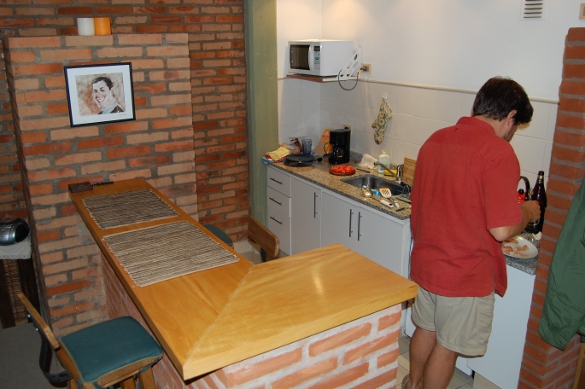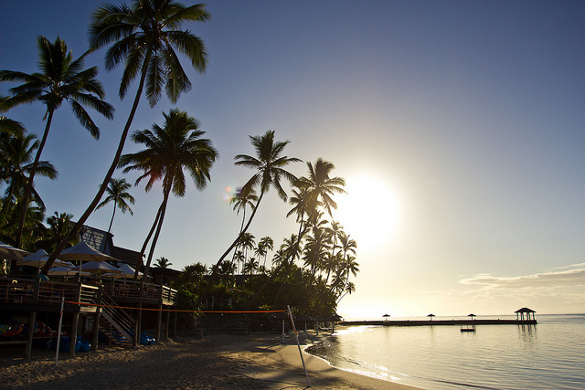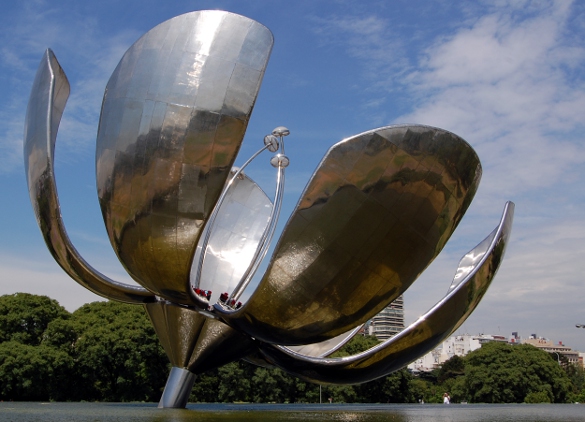
All long-term travelers have their own way of doing things, their own style, their own opinions on the best way to take an extended trip. Some like to move at breakneck speed just the same as a one or two week vacation. Some like to really slooooow it down and hunker down in one or two places for a few months. Most like some mixture of the two.
When my wife and I took a career break, RTW trip, we fell into the last group of moving fast at times and slowing down at others. We would spend a few days in one city then stay in others for a week or ten days, and we visited 89 different cities/towns during our 358 day trip. That averages out to a new place about every 4+ days, which, looking back, is a pretty fast speed.
One area where we actually settled down was Buenos Aires. We decided, before our trip began, that it would be a good idea to take a month, rent an apartment, unpack our bags, and have a home for a bit. So we booked an apartment about 2.5 months into our trip. It was a fantastic experience, and one that I recommend to anyone embarking on their own long-term trip.
Why we didn’t do it again during our trip I will never know, but for those in the planning stages now, I highly suggest considering this option. It helps tremendously when it comes to travel burnout, and it gives you the opportunity to really immerse yourself in a new culture. After moving rather quickly those first few months, we welcomed the change of pace and the chance to unpack our bags, settle down, and just enjoy one place for more than a few days.
The benefits of slowing down

Not unlike many other long-term travelers, we suffered from the travel burnout phenomenon several times throughout our year abroad. By the time the year was up, we were both more than ready to return home (after a month home though, we were more than ready to head back out on the road). Travel burnout is a tough thing to explain to those who have never traveled for a long time, but that’s a topic for a whole different post.
Because of our work situations, we actually had the opportunity to stay on the road for a few months longer than we did. For many different reasons, we chose to come home instead, despite the fact that we would have spent less money by extending our trip for a couple more months. The biggest reason for returning home was simple. We were simply sick of traveling and were ready to be home. It sounds crazy to even think of how or why we felt that way at the time, especially now that our trip is nearly a decade in the rear view mirror.
The more I think, remember, and reflect, though, the more I realize that we simply moved too fast. There are probably those of you out there who look at the number of countries (11) and cities/places (~90) visited on the trip and think we’re crazy. We averaged one country a month and a new place or city about every 4 days. Some who have done a similar trip went to two or three times as many places and moved much quicker (though others went to half).
Our month in one place
Which brings me back to our month in Buenos Aires. It was a heavenly month that we reminisce about often. We had our own apartment, our own bathroom, our own KITCHEN, our own refrigerator, a balcony, wifi, cable, even a pool in the building. We could walk down to the corner market every day, shop at the same grocery stores, frequent the same restaurants, and have drinks at the same bars. We took daily Spanish classes, chatted with people in our building, got to know the bus and subway routes, and became familiar with the different barrios. Really being able to immerse ourselves in the city was fantastic.
Learning about the customs, the culture, the food, and the way of daily life is what drives us to keep going, to keep exploring new places, to keep traveling.
And that’s why we travel. That’s what we love about going to new places. Learning about the customs, the culture, the food, and the way of daily life is what drives us to keep going, to keep exploring new places, to keep traveling. And by only spending a day, or two, or even a week, in one place, while staying in a hostel and having 90% of your conversations with other travelers just doesn’t afford you the same type of experience.
Why you should slow down, too
While I really don’t regret anything we did, if I had to do it over again, I would change a few things. First, I would go much slower than we did. It’s difficult to find a good balance, especially when you’ve never traveled like this before. But more than anything, I would choose to stay in one place longer, rent an apartment, and really get to know a city, a neighborhood, and its people. It’s no coincidence that the places we talk about most are the ones we spent the most time in: Buenos Aires, Bangkok, and Bariloche amongst them. We really got to know those places, and when you’re constantly throwing yourselves into new places and cultures a few times a week, it’s nice to have some familiarity.
When to settle down
When you settle down while on a long-term, RTW trip is completely up to each individual. From our experience, though, it seems like we went through some tough times every couple months. After a while, traveling gets very tiresome. Having to pack and unpack every few days, worrying about bus and train times, how and where to get tickets, finding the right place to sleep, making restaurant and food decisions – it all gets exhausting after a while. So spending time in one place, even if it’s for a few weeks or a month, can really recharge your battery and get you ready for the next leg of your trip.
It’s no coincidence that the places we talk about most are the ones we spent the most time in
There’s obviously no set rule for when and how often you should do this, so I would suggest just listening to your body and mind. If you find yourself getting annoyed easily, or losing your patience, or simply not wanting to drag yourself out of bed to catch that next bus, then it might be time to slow down. Depending on where you are and what you’re doing will also depend on how often you might want to hunker down in one place. When traveling in high-stress countries like India and Egypt, you tend to get worn down more easily, so it might only take a few weeks or a month to need a break. But if you’re in Western Europe or Australia or New Zealand, you may be able to travel for months before feeling burnt out.
Where to settle down
When you start noticing the signs, though, then start thinking about a city or town where you might want to call home for a while. Again, everyone is different, so where you go all depends on you. Some like to spend time in a big city so they have plenty of options. Sometimes travel burnout also involves a bit of homesickness, so being in a large, metropolitan city can help because you may have some things – like food and shops – that are familiar to you. There’s no shame in eating something familiar every so often. Missing home is part of traveling long term, and at some point, you’re going to want something that reminds you of home, even if that something is Starbucks or McDonald’s.
Some people want nothing but relaxation when they start feeling travel burnout, so the thought of being in a big, bustling, loud, massive metropolis sounds like hell. That’s okay if you feel that way. Not everyone enjoys big cities. If this is you, then look into a small, quaint town. Or head to a beach city if you’ll have no problems lounging around all day. Maybe you’re an outdoorsman that simply needs some peace and quiet. Consider renting a tent or small cabin in the mountains somewhere and take a few weeks to recharge your batteries.
How to settle down
There are tons of options for slowing down and staying put for a while. If you’re heading to any major city, then look into renting an apartment. Airbnb is the most popular resource at the moment. VRBO has apartment/house/condo rentals worldwide, though the bulk are located in the US and Europe. Simply googling your destination + apartment rentals should get you started. Just remember to read the reviews closely and go with a reputable agency.
House-sitting is also becoming a popular option for those traveling long-term and looking for a place to stay put for a while. Not only will you get to live in someone’s house or apartment for a while, you’ll get to do it for free in most cases as this is an exchange.
Check out the following articles and organizations to find out more information on house-sitting around the world:
- Register for MindMyHouse
- Check out Caretaker
- Read How to Get Started with House-Sitting
There are plenty of reasons to slow down
While slowing down because of travel burnout is a major reason why many long-term travelers decide to stay put somewhere for a while, there are plenty of other reasons why you might want to take it easy on a long trip. Getting the opportunity to really experience a new culture is perhaps the best reason for becoming a temporary expat. Even though you probably left to get away from your daily routine, you’ll probably find after a certain amount of time on the road that you’ll start to miss having a bit of a routine. Having your own place to call home, while settling down and doing things like grocery shopping and cooking, is a nice respite after moving constantly.
Or maybe you’re in a region where you want to learn the language. Consider settling down for a while in order to take a language class. It’s nice to be able to go to the same teacher and school instead of switching constantly. By taking classes and immersing yourself in the culture by living there, you give yourself a better opportunity to grasp that language.
If you’ve thought about working while you’re on the road, then take advantage of settling down to do so. Many times you can find an apartment or room in a house to rent for cheaper than a hostel, especially if you are traveling with someone. And if you’re working to make a few extra bucks, staying put and not moving will only help your bank account. It’s a great way to get off the road for a while, learn about a place in depth, and save some money while you’re doing it.
There’s no one right or wrong way to travel. Everyone has their own preferences, and everyone likes to do things differently. The most important thing we can do is listen to that little voice inside our heads and do what it is that WE want, what it is that makes US happy.
Read the following articles about the benefits of slow travel:
- Travel is Not a Contest (and Other Reasons to Embrace Slow Travel)
- Why and How to Embrace Long-Term Slow Travel
- The Benefits of Renting on Your RTW Trip
- Travel vs. Cultural Exchange
Photo credits: kewl, all others courtesy of Adam Seper and may not be used without permission.


